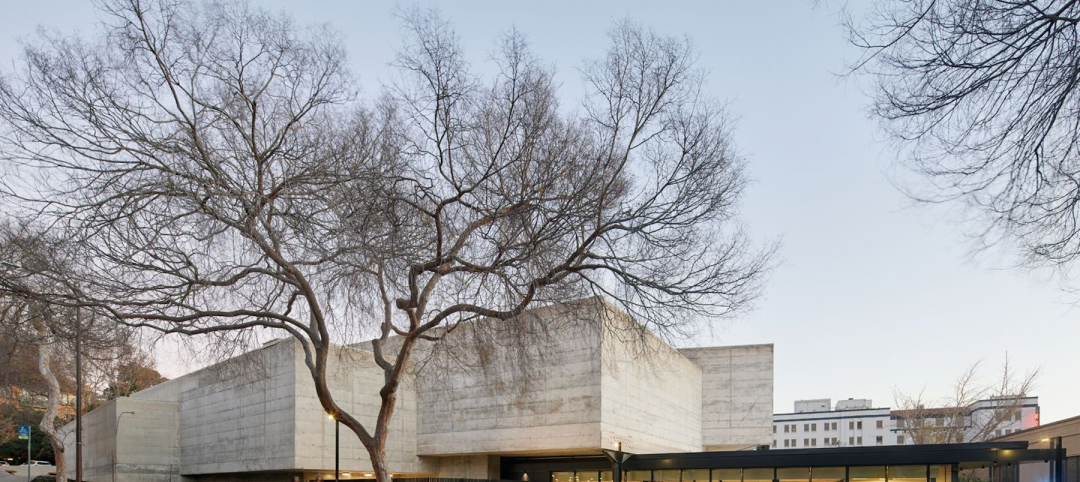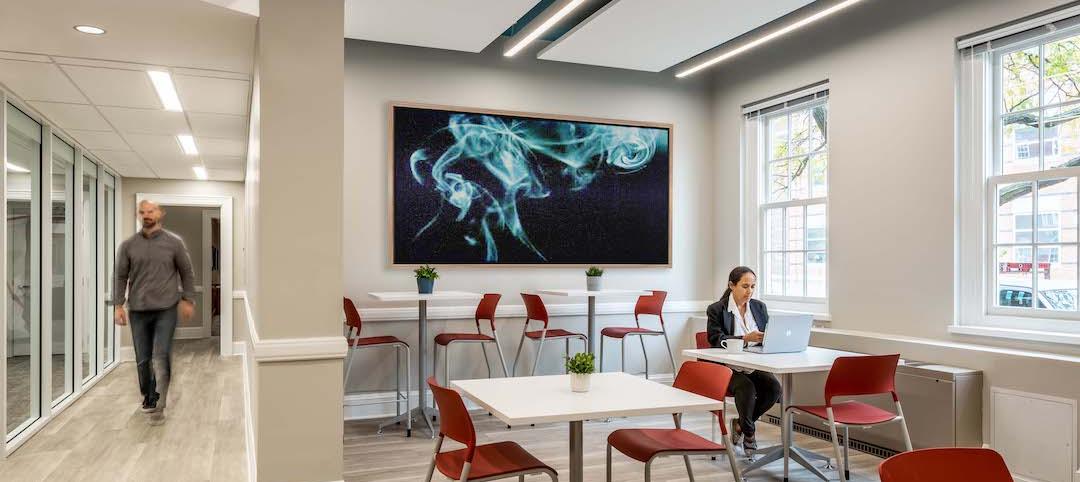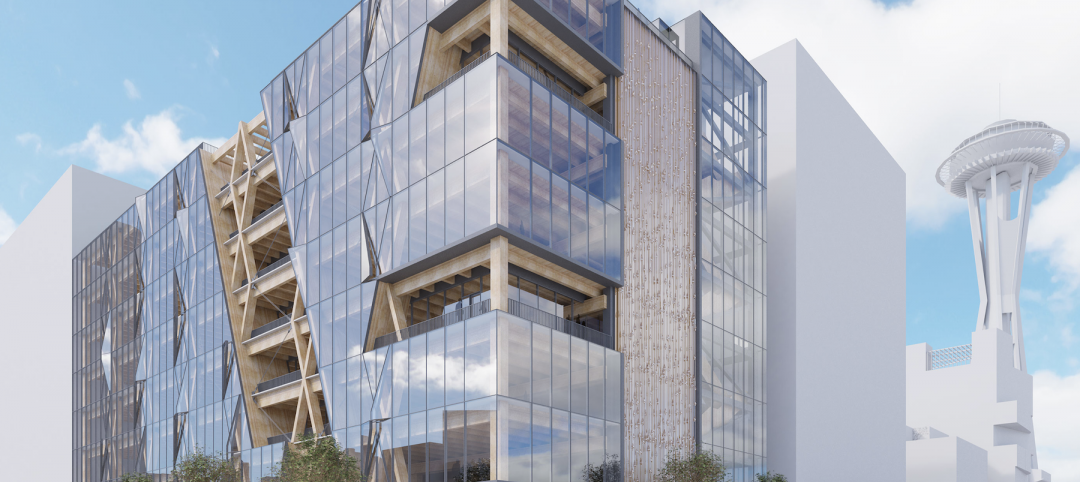In New Brunswick, N.J., a life sciences development that’s now underway aims to bring together academics and researchers to work, learn, and experiment under one roof.
HELIX Health + Life Science Exchange is an innovation district under development on a four-acre downtown site. At $731 million, HELIX, which will be built in three phases, represents New Jersey’s largest-ever investment in life sciences and medical education, according to a press statement.
SJP Properties, in collaboration with New Brunswick Development Corporation (DEVCO), recently unveiled plans for H-2—HELIX’s second phase. A mixed-use, 600,000-sf building, H2 will include build-to-suit lab and office space that can serve a range of uses for large corporate life sciences and technology company tenants. HDR is the lead architect for H-2, and JLL is the building’s leasing agent.
Next to Rutgers University and across from the city’s train station, the 574,000-sf H-1, the development’s first phase, will include the New Jersey Innovation HUB, the new home of Rutgers Robert Wood Johnson Medical School, and a Rutgers translational research facility equipped with a variety of labs to advance the work of 80 research teams and help improve individual and public health. H-1’s two-story ground floor will feature publicly accessible amenities and kiosks, such as a 10,000-sf market hall with food options and a 3,000-sf restaurant. H-1 is currently under construction.
H-3, the final phase of HELIX, is proposed as a 42-story mixed-use building with office space and 220 housing units.
HELIX tenants will have access to the New Brunswick train station. In line for a $49 million renovation, the station will provide access to both NJ TRANSIT, operating nearly 100 train stops in the city each day, and Amtrak.
HELIX also will be in proximity to the headquarters and regional offices of several major health, pharmaceutical, and life sciences companies, including those of Johnson & Johnson, Bristol Myers Squibb, and Ascendia Pharmaceuticals. In addition to next-door neighbor Rutgers University, HELIX will be within an hour’s drive to several colleges and universities, including Princeton University, University of Pennsylvania, and Columbia University.
Related Stories
Laboratories | May 20, 2022
Brutalist former Berkeley Art Museum transformed into modern life science lab
After extensive renovation and an addition, the former Berkeley Art Museum and Pacific Film Archive at the University of California, Berkeley campus reopened in May 2022 as a modern life science lab building.
Laboratories | Apr 29, 2022
Oracle Industry Lab in Chicago enables development of solutions for multiple industries
The Oracle Industry Lab in Chicago, which provides customers in multiple industries the opportunity to test new technologies, recently opened.
Laboratories | Apr 7, 2022
North Carolina's latest play for biotech real estate development
The Tar Heel State is among a growing number of markets rolling out the welcome mat for lab spaces.
Projects | Mar 11, 2022
Studying science in the sky
In sharp contrast to other types of commercial real estate, the life sciences market is booming, according to SGA, an architecture firm based in Boston and New York that has extensive experience designing life sciences buildings.
Laboratories | Feb 10, 2022
Historic building becomes a research science incubator
Svigals + Partners designed the project.
Laboratories | Feb 8, 2022
A new concept for science buildings emphasizes construction speed and design flexibility
The NEXT prototype—devised by Gensler, KPFF, and Buro Happold—also leans toward decarbonization and wellness.
Laboratories | Feb 3, 2022
New veterinarian building is Norway’s largest ever development in the university sector
The project is one of the largest and most complex ever undertaken in Norway.
Laboratories | Jan 28, 2022
3 must-know strategies for developers in today’s life sciences industry
While the life sciences industry had been steadily growing, this growth exploded when the pandemic arrived—and there is no indication that this lightning-fast pace will slow down any time soon.
Laboratories | Jan 17, 2022
A health crisis gives life to life sciences
Construction and renovation projects are heaviest in markets with consistent talent streams.
University Buildings | Jan 11, 2022
Designing for health sciences education: supporting student well-being
While student and faculty health and well-being should be a top priority in all spaces within educational facilities, this article will highlight some key considerations.


